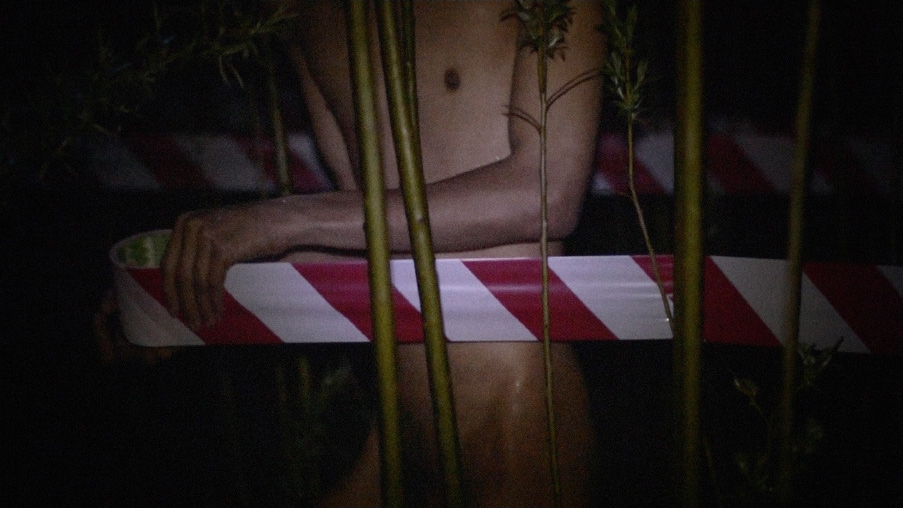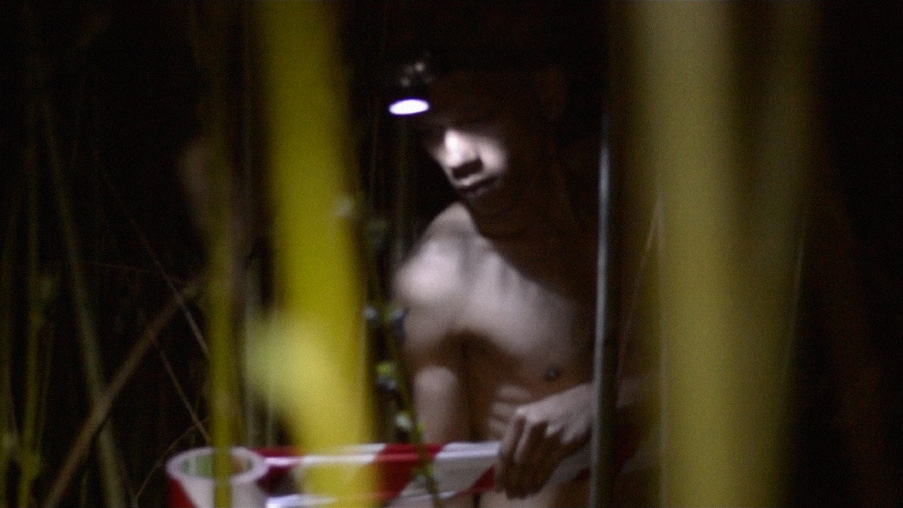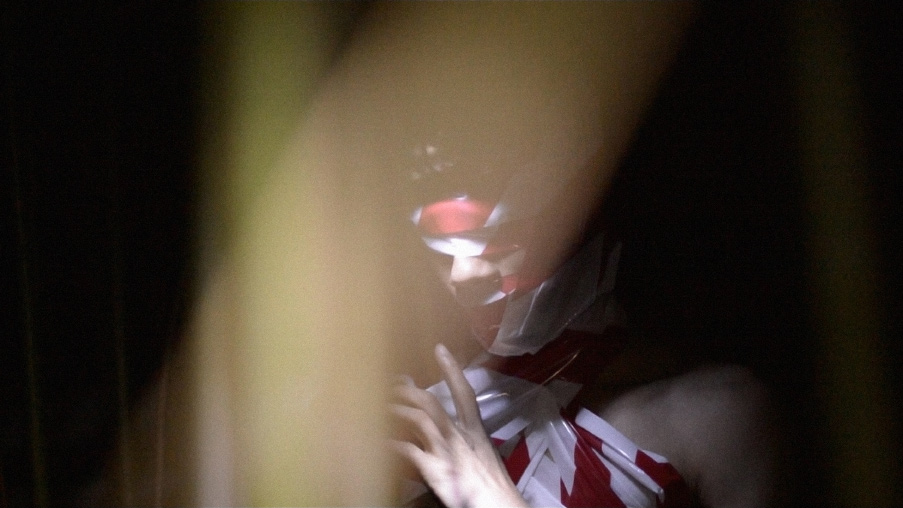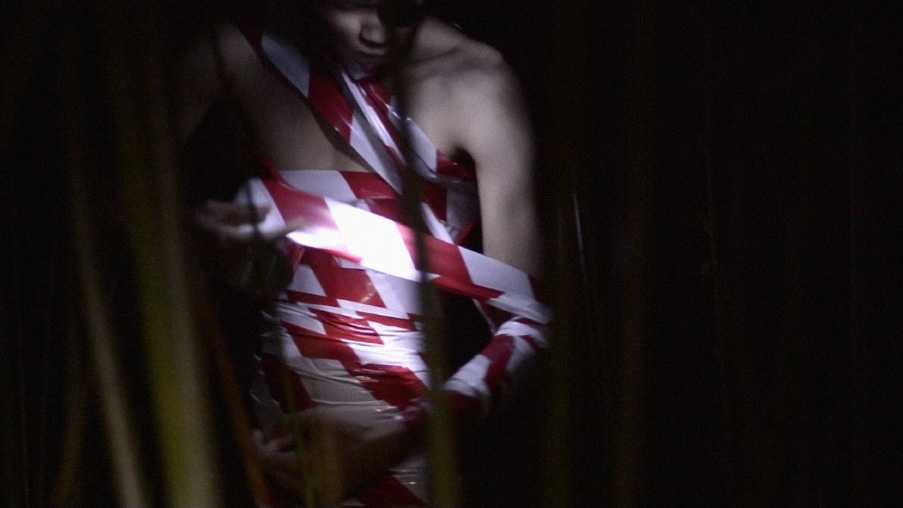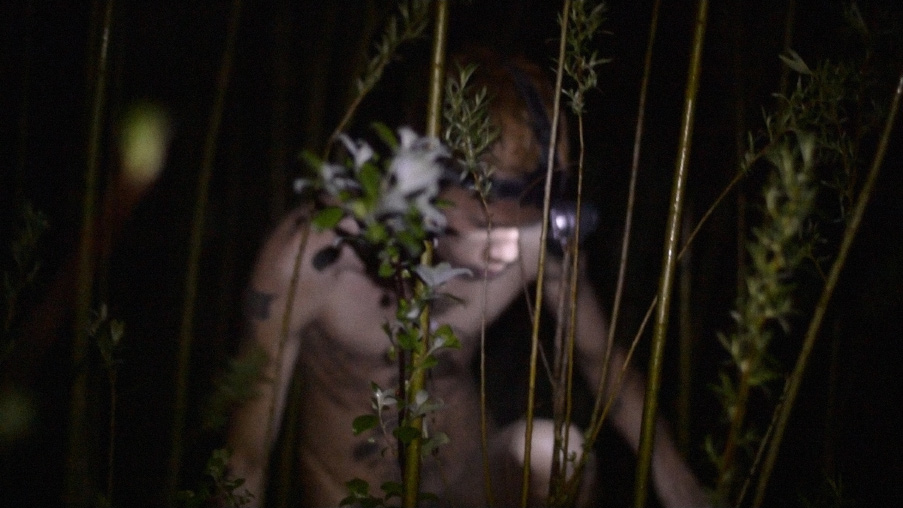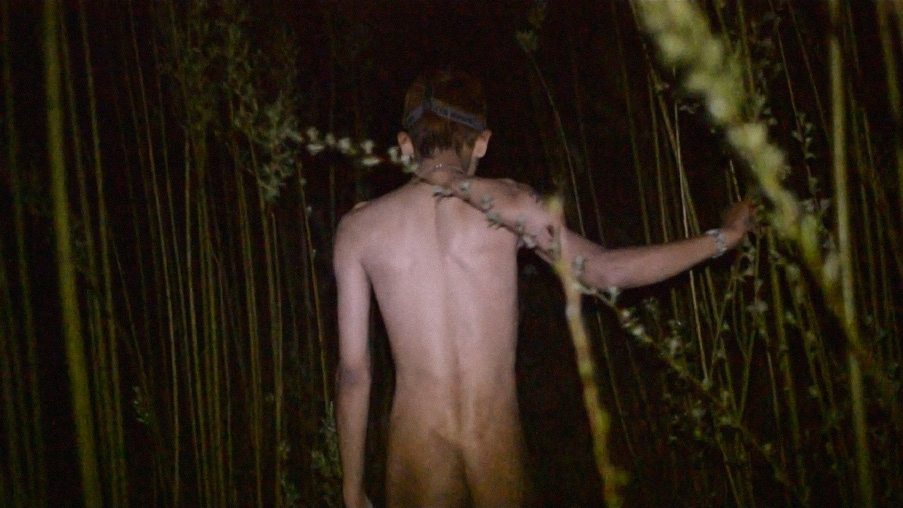Cordon (with Kolatt)
Video loop, 14 min 11 sec, 1280 x 720 mov, 2013.
Collaboration with Myanmar performance artist Kolatt.
Premiered April 23, 2013, at ZHdK Zurich University of the Arts, Switzerland.
The art scene in Burma is suffering from censorship. All exhibitions must be reviewed and permitted by a government censorboard. All artworks with political, sexual and religious aspects are prohibited to exhibit.
In Cordon (watch here) — first in a row of collaborations between Myanmar performance artist Kolatt and Hungarian visual researcher Bálint Rádóczy — we see the plain, clear, symbolic gestures of a performative task documented in a narrow, claustrophobic visual language and sound design, intensified to the verge of turning abstract. The objective of the duo was to be clear in delivering the message and yet creating a visual entity of its own right, going beyond mere documentation.
The nudity of the artist generates a voyeuristic mood, emphasised by the flashlight penetrating the night, combined with the restricting, separating, excluding connotations of the police tape that resonates to the gender-issues being the main theme of Kolatt’s body of work. The scene was shot at a bamboo plantation, a symbolic choice as well: at first glance it might recall idealistic notions of freedom traditionally related to nature, but in fact the young bamboo sprouts are standing in meticulous order in a controlled environment: their whole lifespan has been predesigned.
The work’s narrative reflects on the intricate relation between the individual and society, how one copes with living in a narrow, restricting system by creating an obedient, socially acceptable alias; how this persona takes over your private self; and how one tries to fight back repeatedly, in a recurring loop that eventually causes a third identity to come alive: a split personality that is perceived as troubled, instable and possibly dangerous to society.
„(…) In the video „Untitled (Cordon)”, we are in a forest of young bamboo shoots at night, following at a distance a young, naked man unravelling a roll of red and white cordon tape. He winds a path through the woods to create a layer of barriers before enveloping himself in the tape. Watching the bizarre ritual of the performance unfold, the area he sets out seems arbitrary; but within the certainty of his gesture is the assertion that we delineate and define our own boundaries of significance.” — Chris Fite-Wassilak, 2013
